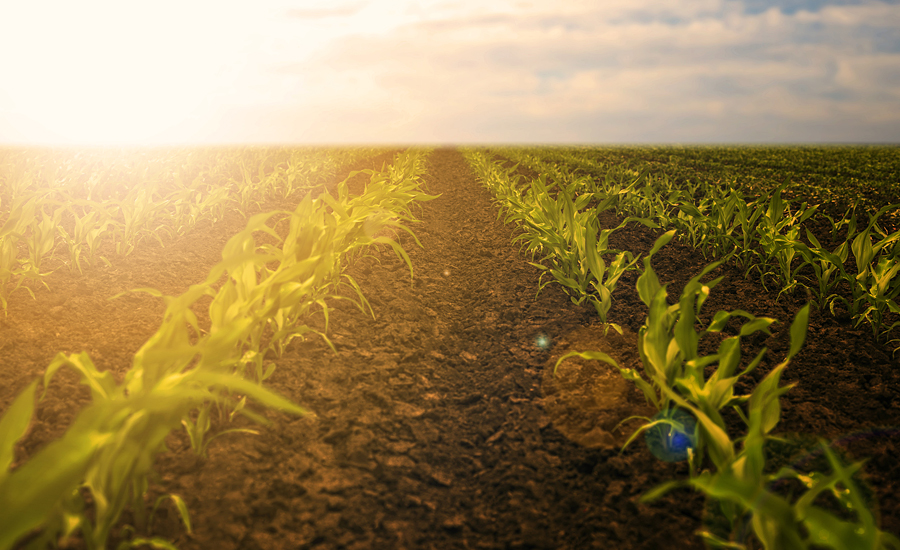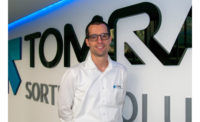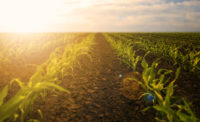More than two-thirds of all food discarded in people’s homes in three major U.S. cities was potentially edible, and up to 68 million additional meals annually could potentially be donated to people in need in those cities, according to a pair of new reports released by the Natural Resources Defense Council (NRDC), New York, with support from The Rockefeller Foundation, also based in New York.
The reports offer a look at the amount and kinds of food wasted in Denver, Colo.; Nashville, Tenn.; and New York, providing a detailed look at waste in people’s homes. They also estimate how much the cities could increase donation of food to people in need, and identify patterns that emerged across the three cities that suggest how these problems and opportunities could be tackled at a city level nationwide.
“An outrageous amount of food is wasted in our cities, yet at the same time many residents are in need,” says Dana Gunders, senior scientist at NRDC. “Making the most of our food supply has wide-reaching benefits—helping to feed people and save money, water and energy in one fell swoop. These reports offer cities a critical first step.”
“We know that individual families, up to entire companies and governments, have a part to play in the fight against food waste. But, until now, we didn’t fully understand what, how and how much we waste,” says Devon Klatell, associate director at The Rockefeller Foundation. “With this important new research, cities like Denver, Nashville and New York City can better rescue surplus, wholesome food; they have the data they need to set policy and feed more people in their cities. Everyone wins.”
What and how much is wasted
The first report, Estimating Quantities and Types of Food Waste at the City Level, provides a baseline assessment of residential, industrial, commercial and institutional food waste in the three cities.
The study tracks not only how much food residents disposed of in their homes, but also the types of food and beverages they discarded to multiple destinations (i.e. trash, drain, compost and fed to pets), as well as their reasons for doing so. The report also estimates how much of that food was potentially edible. The data was compiled from kitchen diaries and surveys completed by residents, as well as from food waste audits, which were conducted by digging through residential trash and compost in each of the cities.
The study also estimates the amounts of food wasted in specific business sectors of the cities, including restaurants, groceries, hotels, hospitals and schools.
Key findings include:
- An average of 3.5 pounds of food per person was wasted at home every week across the three cities, and more than two-thirds (68%) of that could have been eaten. The most common reason given for wasting edible food was that the food was moldy or spoiled, followed by residents not wanting to eat leftovers.
- Six of the Top 10 most commonly wasted edible foods in households were the same in all three cities—coffee, milk, apples, bread, potatoes and pasta.
- In Denver and New York, the residential sector was estimated to produce the most food waste, followed by restaurants and caterers. In Nashville, the residential and restaurant sectors were virtually tied for the Top 2 generators of food waste. Other substantial contributors included food wholesalers and distributors, food manufacturing and processing, grocers and markets and hospitality.
“The best way to keep food from going to waste is to prevent it from the start,” says Darby Hoover, a senior resource specialist in NRDC’s food and agriculture program. “When cities look to reduce food waste, they often focus solely on recycling methods—such as composting—but prevention is where environmental and cost benefits are greatest. By assessing how much, where and why food is going uneaten, we can help cities take stronger, more effective action to waste less food.”
How much food could be rescued for people in need
A second report—Modeling the Potential to Increase Food Rescue: Denver, New York City and Nashville—quantifies how much surplus food in these cities, beyond current donations, could potentially be directed to people in need, rather than discarded.
It revealed potential to increase food donation in all three cities. Specifically:
- Up to 68 million additional meals annually could be donated across all three cities, beyond current donations, under optimal conditions—up to 7.1 million meals in Denver, 9.3 million in Nashville and 51.9 million in New York.
- Denver and Nashville could meet as much as an additional 46-48% of their cities’ unmet food needs, respectively, by maximizing food donation from retailers, institutions and other consumer-facing businesses located in their community. Similarly, New York could meet an additional 23% of its unmet food needs, beyond current donations.
- Across all three cities, the retail grocery sector demonstrated the largest untapped potential for increased food donation among the sectors reviewed, mainly through expanded donation of nutritious foods like fruits, vegetables, meat, dairy and deli items. Institutions like hotels, healthcare, universities and K-12 schools also have strong potential, followed by restaurants, convenience stores and other businesses.
“Cities across the country have enormous potential to get more food into the hands of residents who need it most,” says JoAnne Berkenkamp, senior advocate in NRDC’s food and agriculture program. “Our analysis provides insight that can help cities do just that. Food businesses, including grocery stores, institutional foodservice and restaurants, have the opportunity to become a much bigger part of the solution.”
Residents want to help, but don’t think they’re wasteful
A survey of residents in these three cities revealed that more than half (57%) think their actions make a meaningful difference in reducing the amount of food going to waste, yet 76% believe they already throw out less food than the average American. More than half of survey respondents also feel less guilty about wasting food if it is composted.
These findings suggest that raising awareness about the amount of food wasted by city residents, and empowering them with more tips and tools to reduce this waste—from meal planning to shopping, storage and creative recipes—can go a long way toward better combating the problem.
NRDC and New York-based Ad Council are in the midst of a public service campaign aimed at doing just that. Save The Food seeks to help cut food waste from consumers, who are the largest single source of food waste—more than grocery stores, restaurants or any other part of the production chain.
“Cities are highly motivated and uniquely positioned to stop food from being wasted,” says Jason Babbie, deputy director of the urban solutions program at NRDC. “Some cities are already taking commendable steps to boost waste prevention, food donation or composting. With more information and support, more cities can develop and execute an integrated approach to help solve these important problems.”
Case studies highlight innovations in waste reduction
Alongside the reports, NRDC also released a collection of case studies from across the country that highlight innovations by government agencies, non-profits and private companies seeking to address hunger, reduce waste and create jobs and career development opportunities for low-income and at-risk individuals.
These reports highlight the role cities can play in identifying what and where food is going to waste as a critical first step toward wasting less food and better meeting the need for food donation in their communities.
VERMONT: Universal recycling law bans food from landfills
The state of Vermont passed comprehensive legislation in 2012 that bans the landfilling of food. The law clearly identifies the meaningful alternatives that exist for uneaten food and food scraps, and encourages Vermont residents and businesses to stop wasting food that instead can help families in need, feed animals on local farms or create rich soil and renewable energy products. This law, phased in over a period of years, requires that food, alongside other organic waste and recyclables, be diverted from landfill disposal by 2020. As a result of this law, the amount and quality of food donated to food banks has increased dramatically, landfill disposal has decreased and recycling and composting have increased. For example, from 2015-2016, food donations have grown by nearly 40%. And, from 2014-2015, landfill disposal decreased 5% statewide while recycling and composting increased 2%. Some towns have seen even stronger results. Vernon, Vt., also saw its trash volume cut in half and its recycling increase by 50%.
MASSACHUSETTS: Daily Table rescues food, creates better alternatives for low-income families
Daily Table, a non-profit grocery store based in Dorchester, Mass., uses excess food from growers, manufacturers, distributors and supermarkets to provide low-income families with access to affordable, healthy food. Founded in 2015, it is designed around customer experience and community needs. When planning the launch of this new business model, Daily Table worked with experts to develop nutrition guidelines that inform decisions regarding the food that the store accepts as donation and sells. It also established a Community Advisory Council to ensure local input and hires from within the local community. Informed by this stakeholder engagement, Daily Table recognized that many of its customers need meals that can be prepared quickly. So, it offers both ready-to-eat balanced meals as well a selection of produce, bread, dairy and other healthy grocery items. At Daily Table, a family can get the recommended amount of nutrients within its Supplemental Nutrition Assistance Program (SNAP) allotment within the time constraints of a typical working low-income family. By covering a significant portion of its operating costs through grocery sales, Daily Table aims to break even consistently, enabling long-term sustainability for the store. Building on the continued progress of the Dorchester store, Daily Table will open a second store in Roxbury, Mass., in November. And, the Daily Table model is designed to facilitate further replication.
DC Central Kitchen’s (DCCK) mission is to “use food as a tool to strengthen bodies, empower minds and build communities,” with a focus on helping people build a path out of poverty and incarceration. It started out in 1989 by collecting surplus food from events and training at-risk adults to prepare meals to donate to homeless shelters and other social services non-profits. Since then, it has expanded to include additional social enterprises, such as a catering business that hires graduates from the company’s Washington, D.C., culinary training program and gives them a chance to begin careers in foodservices—The Campus Kitchens Project, Washington, D.C., which uses on-campus kitchen space, rescues food from college cafeterias, trains students to prepare and deliver meals and works with the surrounding community to identify opportunities for lasting impact, and Healthy School Food, a Chicago-based program that provides healthy meals to local schools. In 2016, DCCK’s foodservice-related revenues covered more than half of its operating costs, with the remaining half covered by philanthropic support. In the same year, DCCK rescued 680,987 pounds of food, prepared approximately 1.8 million meals, graduated 91 culinary students and achieved a job placement rate of 88%. In addition, its approach has been replicated in other communities, expanding the impact of this model.
SAN FRANCISCO: Keeping food out of landfills through composting
San Francisco has a long history of leadership in reducing waste. In 1996, it became what is said to be the first city in the nation to establish a large-scale food composting program. The city achieved the statewide goal of 50% landfill diversion in 2000. In 2002, San Francisco expanded its commitment with a goal of 75% diversion by 2010 and zero waste by 2020. In 2009, the city implemented a mandatory recycling and composting policy for residents and businesses. By 2011, the city exceeded its 2010 goal with a 78% diversion rate. To achieve these results, San Francisco phased in legislation over time, developed financial incentives for households to compost and recycle and invested in extensive outreach and marketing. It established citywide collection of food scraps and yard trimmings for composting to advance zero waste goals. The San Francisco Department of the Environment and the city’s Department of Public Works partnered with the city’s waste hauler, Recology, San Francisco, on a suite of strategies for building the city’s composting and zero waste programs. As a result of these efforts, since 2012, San Francisco has diverted more than 80% of all discarded waste from disposal.
Drexel Food Lab, a Philadelphia-based research group of faculty and students from Drexel University’s Culinary Arts and Food Science department, partnered with Brown’s Super Stores, Norristown, Pa., to study its most commonly unsold food items. In addition, Drexel collaborated with local shelters to understand their needs for donated food. Informed by this research, the Drexel Food Lab developed practical resources that were relevant to the shelters’ needs, such as simple, low-cost recipes for repurposing the most commonly donated produce and bakery items into value-added food products, such as veggie chips, jams, granola bars and smoothie bases, and tested these recipes at local shelters. By understanding both what items were most commonly wasted at grocery stores and what food products were needed by shelters, Drexel was able to hone strategies to maximize the value and nutritional benefit of available foods. To expand the scale and impact of this project, Drexel also mapped out a replicable business model for repurposing excess supermarket food that could be implemented by food rescue organizations as a revenue generator, by community shelters and would also support local jobs and entrepreneurs across the United States.
Waste Not OC, Orange County, Calif., is a public-private partnership that brings together a coalition that includes the food industry, public health and food safety officials, food banks, private organizations and charities to facilitate the donation and distribution of wholesome surplus food to people in need. The coalition uses a multipronged approach that includes creating tools to facilitate food donations and educate the community; pursuing innovative partnerships to overcome transportation challenges for donated food; and identifying and connecting food-insecure individuals to food sources. Among other strategies, the coalition has sought to bridge the gap between the health department and food-related businesses, helping to turn Orange County health inspectors into champions for food donation, while also educating businesses on how to safely donate food. Since the coalition’s inception in 2012, they have partnered with more than 200 agencies and pantries and more than 400 businesses, food distributors, healthcare agency employees and volunteers. In the first half of 2017 alone, Waste Not OC recovered 3,000 tons of surplus food, which amounts to approximately 5 million meals for food-insecure members of the community, a significant increase since 2016.
TENNESSEE: Second Harvest Food Bank develops solution for rescuing surplus tomatoes
Second Harvest Food Bank of Middle Tennessee, dubbed as one of the largest food banks in the United States, has a mission to provide food to those in need and work toward solving hunger issues. Second Harvest has long sought ways to reduce the cost of acquiring food while also increasing the amount of fresh produce it distributes. An opportunity arose in 2015 when FreshPoint, a Houston, Texas-based produce distributor, offered to donate 10,000 pounds of fresh tomatoes every week. By investing in in-house capacity to process these surplus tomatoes into a shelf-stable spaghetti sauce, Second Harvest is able to provide a product that is low in sodium, sugar and fat and high in vitamin C, giving families access to a high-quality, nutritious food year-round. As a result, Second Harvest is now one of the first food banks in the country to find a way to capture and redistribute millions of pounds of fresh produce through a large-scale food preservation system.
NATIONWIDE: Bon Appétit cuts foodservice costs and waste with imperfect produce
In 2014, Bon Appétit teamed up with its parent company, Compass Group USA, Charlotte, N.C., and its extensive supplier network to evaluate opportunities to prevent waste across the supply chain and roll out the Imperfectly Delicious Produce (IDP) program state by state. The IDP purchasing program rescues flavorful but cosmetically imperfect produce and underused parts of fruits and vegetables from farms and distributors. IDP works with suppliers to identify appropriate products and trains produce processors, distributors and farmers about Bon Appétit’s purchasing standards. Bon Appétit chefs then incorporate these off-size or misshapen ingredients into their recipes. Bon Appétit is dubbed as the first major foodservice provider to establish a formal purchasing program in partnership with its distributors and major suppliers to use imperfect produce. The program started with successful pilots in California, Pennsylvania and Washington. As of February, Bon Appétit has launched IDP in 30 states, while also drawing on Compass Group’s broader network of suppliers to have an even greater impact. In just a few years, Bon Appétit has already saved more than 2 million pounds and more than 50 different varieties of produce from going to waste.






